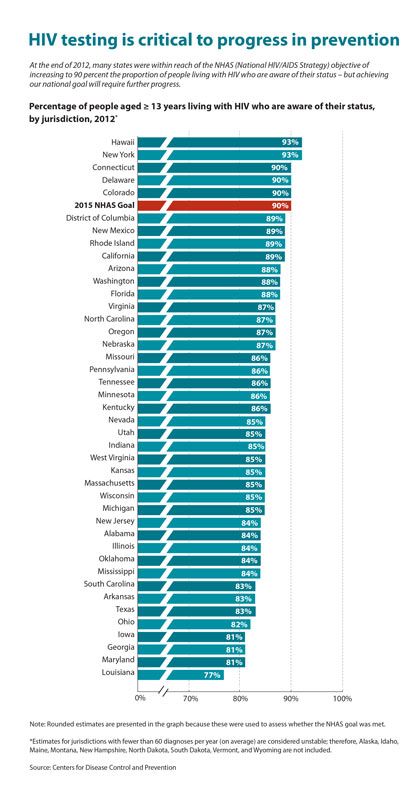The Centers for Disease Control and Prevention (CDC) has released estimates of the rate of people living with HIV who are aware of their serostatus, broken down by state. Out of the 42 states for which substantial data was available, only five have diagnosis rates above the 90 percent benchmark set by the National HIV/AIDS Strategy.
The CDC published the data in the Morbidity and Mortality Weekly Report to mark National HIV Testing Day, which is June 27.
According to 2011 data, an estimated 1.2 million Americans are HIV-positive, with 86 percent aware of their status.
Connecticut, Delaware and Colorado have estimated HIV diagnosis rates of 90 percent, while both Hawaii and New York have a rate of 93 percent. (These estimates are based on 2012 statistics.) This puts New York in good stead as the state government embarks upon an ambitious plan to increase HIV treatment rates and reduce new infections, the latter rate of which is already steadily dropping according to separate estimates previously released by the state.
According to the CDC’s report, the remaining 37 states have diagnosis rates spread relatively evenly between 81 and 89 percent. A notable outlier is Louisiana’s 77 percent diagnosis rate, the lowest of all states included in the report. Louisiana—whose governor, Bobby Jindal, announced his candidacy for president on June 26—has an estimated 22,600 people living with HIV, with 5,100 of them undiagnosed. By comparison, New York has an estimated 177,000 HIV-positive residents, with 12,600 of them unaware of their status.
The number of HIV-positive people per 100,000 state residents ranged from a low of 110 in Iowa to highs of 489 in South Carolina, 497 in Texas, 580 in New Jersey, 583 in California, 880 in Maryland, 1,070 in New York, and 3,936 in Washington, DC.
To read the report, click here.
Advertisement
Advertisement
Advertisement






Comments
Comments